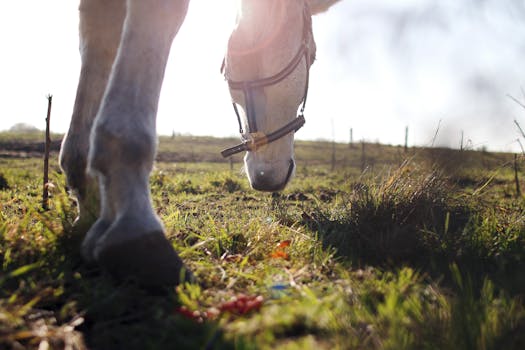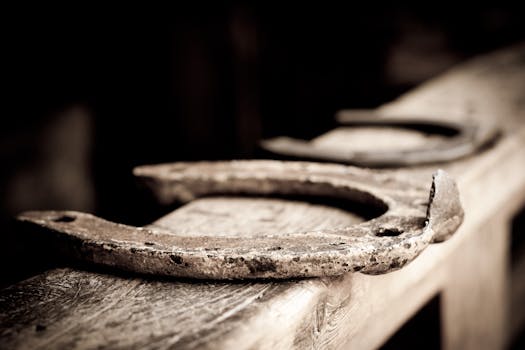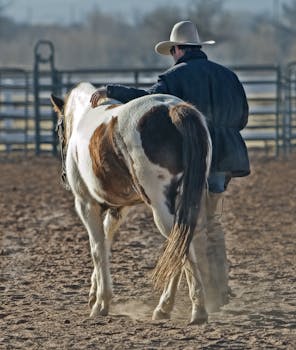 Have you ever been out to see your horse, only to find they are severely lame? Sudden causes of lameness can have many triggers, and if your horse is trying to painfully move about you may want to check its hoof.
Have you ever been out to see your horse, only to find they are severely lame? Sudden causes of lameness can have many triggers, and if your horse is trying to painfully move about you may want to check its hoof.
Hoof abscesses are no joke. They are painful and can occur in an instant, or so it would seem. This is demonstrated through the onset of sudden lameness, even if the horse seemed sound and fine the day prior. Check your horse’s legs for any unusual swelling or excessive heat – if nothing can be found then begin examining your horses’ hoofs, particularly the soles and coronary band.[social_warfare buttons=”Facebook,Pinterest,Twitter,Total”]
Signs of hoof abscesses include distress and extreme lameness or inability to move about easily. The horse may only put weight on its toe in order to keep the pressure off its sole where the abscess is located. Other signs may include a hoof that feels excessively hot, or the affected leg becoming swollen.
The heat, pain, and lack of mobility are caused by the pressure an abscess creates. An abscess in the hoof has nowhere to go to relieve the pressure, so it continues to build until it “pops” or is located and drained accordingly.
Please note that The Phoenix Filly is a participant in affiliate programs meaning that I will earn a small commission if you click through and make a purchase. I may receive a small commission (at no cost to you) if you subscribe or purchase something through the links provided.
The Causes
Hoof abscesses are common and can occur due to a variety of factors.
Your horse may have sensitive feet to begin with or may be more prone to bruising. Having shoes put on your horse can help with this as well as reduce the amount of bruising from stones or other objects which can cause cuts or bad enough bruises that bacteria can get into the hoof and concoct an abscess.
Improper shoeing, ESPECIALLY nail holes that are too close to sensitive parts o the hoof can also lead to hoof abscesses. If you believe this has occurred, you can wash the hoof with Betadine to help rid of bacteria and a possible infection.
Dirty or wet conditions can also increase the likelihood of bacteria. If the weather changes suddenly from wet to dry, cracks can occur in the hoof which is an invitation for bacteria to enter. Make sure to clean your horse’s feet out every day and watch for any signs of sensitivity or bruising and cracks.
Related Content:
EPM and Horses- The Silent Disease
BotFlies and Horses- Diagnosis, Care, and Tips
Abscess Alert
The most obvious sign of an abscess is lameness. Lameness can range from mild to severe, depending on the size and depth of the abscess. You can locate an abscess by using a hoof tester or by pressing on areas on the sole to locate the sensitive area. Sometimes a black hole can be seen where the abscess has opened.
There may be draining, or an opening located around the coronary band, where the abscess has opened from a contaminated puncture or crack. Look for pus, draining marks, and openings on the sole or near the coronary band on the hoof.
Care of Hoof Abscesses
If you think your horse is lame due to an abscess or the finding of an abscess there are a few things you can do.
If the abscess cannot be visibly seen, but you suspect there is one, you can call your veterinarian or farrier to come test and locate the abscess. They can help locate and then open it to let it drain which can provide relief to the horse. They will still be very sensitive and lame for a few more days while it heals.
 If your horse has shoes, the shoe might have to be removed to find and drain the abscess. Once it has been opened, you can soak the horse’s foot in an inexpensive Epsom salt bath for approximately 20-30 minutes. This can also be done prior to the abscess being opened to encourage it to open and drain, although this does not always work.
If your horse has shoes, the shoe might have to be removed to find and drain the abscess. Once it has been opened, you can soak the horse’s foot in an inexpensive Epsom salt bath for approximately 20-30 minutes. This can also be done prior to the abscess being opened to encourage it to open and drain, although this does not always work.
Epsom salts can usually be found at any major supermarket. Use a shallow feeding pan or soaking boot to soak the foot to cleanse the hoof and promote further drainage.
After the soak, you will have to bandage the hoof to allow it to heal without further reintroduction of dirt and bacteria. Many people use diapers and bandage them to the foot with some Betadine or iodine in it.
You can also try gauze, cotton pads, or other similar items soaked in a Betadine or iodine solution to help rid of any remaining bacteria.
This can be secured to the hoof using Vetrap or duct tape – although duct tape is much harder to remove from the hoof. Keep your horse in a smaller, dry area for a few days and change the dressing as needed (if the horse somehow destroys it) or once a day.
Abscess Prevention
Abscesses cannot always be prevented but there a few key steps to consider helping prevent them.
Look for rocks and sharp objects while riding or during turnout that can bruise or puncture your horse’s hoof and remove them.
Keep feet clean and dry and offer an area were the horse can get out of the rain and mud.
Keep shoes on your horse – this is especially for horses that are prone to bruising and/or that have sensitive feet. Shoes will help protect the hooves and offer a bit more cushion from bruises.
Abscesses can occur suddenly, but they can be treated just as quickly. Don’t hesitate to call your farrier (or vet!) to come out an look at your horse immediately. The quicker the abscess is located and rained, the quicker your horse can heal.
Take a look at this video for more hoof abscess information:
